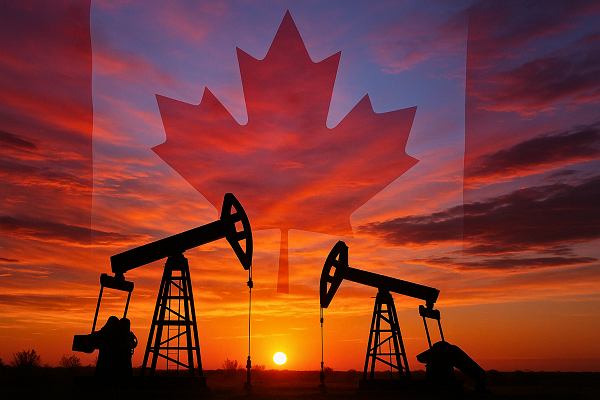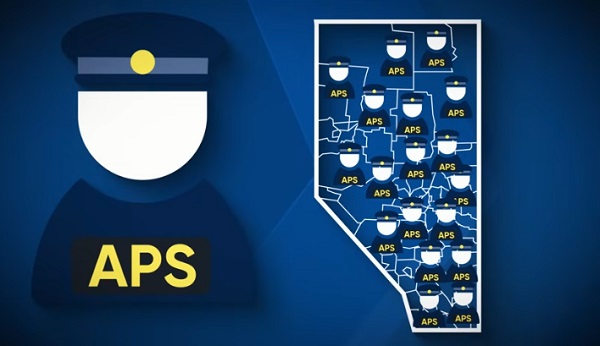Business
New report highlights housing affordability challenges across Canada

From the Frontier Centre for Public Policy
By Wendell Cox
The year 2022 marked a concerning increase in “severely unaffordable” housing markets, extending beyond the scope of the six major markets.
The Frontier Centre for Public Policy’s Demographia Housing Affordability in Canada report, released today, cast a spotlight on the pressing issue of housing affordability in Canada. This comprehensive report offers a detailed analysis of middle-income housing affordability during the third quarter of 2022, focusing on 46 housing markets referred to as census metropolitan areas.
The report goes beyond the conventional analysis of property prices, delving into the intricate interplay between house prices and income. Price-to-income ratios, a crucial metric for assessing housing affordability, have gained global recognition. Esteemed institutions, including the World Bank, United Nations, OECD, and IMF, have endorsed this measurement. The Frontier Centre for Public Policy’s housing affordability index adopts a similar approach, utilizing the “median multiple” calculation. This calculation involves dividing the median house price by pre-tax median household income.
The report sheds light on the historical context of housing affordability within Canada’s six major markets – Vancouver, Calgary, Edmonton, Toronto, Montreal, and Ottawa – each with populations surpassing one million. The period from 1970 to the mid-2000s witnessed relative stability in the housing affordability landscape. However, by 2005, Vancouver’s market initiated a significant shift towards unaffordability, a trend that has only intensified since the mid-2000s.
The year 2022 marked a concerning increase in “severely unaffordable” housing markets, extending beyond the scope of the six major markets. The number of severely unaffordable markets surged from 18 in 2019 to 24 among the surveyed 46 markets. In contrast, the count of “affordable” markets dwindled from eight in 2019 to a mere three.
The advent of remote work, or “telecommuting” during the pandemic led to a surge in households seeking more spacious living spaces. This surge in demand outpaced supply, resulting in a “demand shock” that further exacerbated the challenges of housing affordability.
The epicentre of unaffordable housing primarily lies in British Columbia and Ontario. Notably, Vancouver and Toronto emerged as the most severely unaffordable major markets, ranking third and 10th least affordable among 94 markets in Demographia’s International Housing Affordability Report 2022. This phenomenon extended beyond Vancouver, impacting other markets in British Columbia. Similarly, the trend reached markets beyond Toronto, prompting a net interprovincial migration as households pursued more affordable housing options.
Amidst these challenges, four markets – Moose Jaw (SK), Fort McMurray (AB), Saguenay (QC), and Fredericton (NB) – have managed to uphold their affordability. The Canadian housing market faces intensified scrutiny, with analyses highlighting the formidable task of addressing the nation’s housing crisis. This includes restoring affordability and enabling home ownership amidst obstacles such as the scale of the issue and the capacity of the home-building sector.
At the heart of the crisis lies urban containment regulation, which has driven land prices to unsustainable levels, constraining housing supply for middle income households. This scenario arises from the deliberate intent of urban containment policies to inflate land prices. Disparities in land costs across markets play a pivotal role in housing affordability disparities. Government policies, like urban containment, unintentionally contribute to government-induced inequality by inflating land prices. Practical alternatives exist to revitalize housing affordability.
Migration to more affordable housing markets has become a priority for many, as evidenced by an unprecedented population shift away from major metropolitan areas towards regions with more affordable housing options. Ensuring affordability remains in these markets is pivotal. Neglecting this could lead to replicating the ongoing affordability crisis in regions that are currently more affordable, which could limit opportunities for future generations and impact Canada’s attractiveness as an international migration destination.
About the Frontier Centre for Public Policy The Frontier Centre for Public Policy is an independent, non-partisan think tank that conducts research and analysis on a wide range of public policy issues. Committed to promoting economic freedom, individual liberty, and responsible governance, the Centre aims to contribute to informed public debates and shape effective policies that benefit Canadians.
Wendell Cox is a Senior Fellow at the Frontier Centre for Public Policy. He is principal of Demographia.com, author of Demographia World Urban Areas and an author of Demographia International Housing Affordability (19 annual editions) and Demographia World Urban Areas. He earned a BA in Government from California State University, Los Angeles and an MBA from Pepperdine University. He served as a visiting professor at the Conservatoire des Arts et Metiers in Paris, a national university.
Business
RFK Jr. says Hep B vaccine is linked to 1,135% higher autism rate

From LifeSiteNews
By Matt Lamb
They got rid of all the older children essentially and just had younger children who were too young to be diagnosed and they stratified that, stratified the data
The Centers for Disease Control and Prevention (CDC) found newborn babies who received the Hepatitis B vaccine had 1,135-percent higher autism rates than those who did not or received it later in life, Robert F. Kennedy Jr. told Tucker Carlson recently. However, the CDC practiced “trickery” in its studies on autism so as not to implicate vaccines, Kennedy said.
RFK Jr., who is the current Secretary of Health and Human Services, said the CDC buried the results by manipulating the data. Kennedy has pledged to find the causes of autism, with a particular focus on the role vaccines may play in the rise in rates in the past decades.
The Hepatitis B shot is required by nearly every state in the U.S. for children to attend school, day care, or both. The CDC recommends the jab for all babies at birth, regardless of whether their mother has Hep B, which is easily diagnosable and commonly spread through sexual activity, piercings, and tattoos.
“They kept the study secret and then they manipulated it through five different iterations to try to bury the link and we know how they did it – they got rid of all the older children essentially and just had younger children who were too young to be diagnosed and they stratified that, stratified the data,” Kennedy told Carlson for an episode of the commentator’s podcast. “And they did a lot of other tricks and all of those studies were the subject of those kind of that kind of trickery.”
But now, Kennedy said, the CDC will be conducting real and honest scientific research that follows the highest standards of evidence.
“We’re going to do real science,” Kennedy said. “We’re going to make the databases public for the first time.”
He said the CDC will be compiling records from variety of sources to allow researchers to do better studies on vaccines.
“We’re going to make this data available for independent scientists so everybody can look at it,” the HHS secretary said.
— Matt Lamb (@MattLamb22) July 1, 2025
Health and Human Services also said it has put out grant requests for scientists who want to study the issue further.
Kennedy reiterated that by September there will be some initial insights and further information will come within the next six months.
Carlson asked if the answers would “differ from status quo kind of thinking.”
“I think they will,” Kennedy said. He continued on to say that people “need to stop trusting the experts.”
“We were told at the beginning of COVID ‘don’t look at any data yourself, don’t do any investigation yourself, just trust the experts,”‘ he said.
In a democracy, Kennedy said, we have the “obligation” to “do our own research.”
“That’s the way it should be done,” Kennedy said.
He also reiterated that HHS will return to “gold standard science” and publish the results so everyone can review them.
Business
Elon Musk slams Trump’s ‘Big Beautiful Bill,’ calls for new political party

From LifeSiteNews
By Robert Jones
The Tesla CEO warned that Trump’s $5 trillion plan erases DOGE’s cost-cutting gains, while threatening to unseat lawmakers who vote for it.
Elon Musk has reignited his feud with President Donald Trump by denouncing his “Big Beautiful Bill” in a string of social media posts, warning that it would add $5 trillion to the national debt.
“I’m sorry, but I just can’t stand it anymore. This massive, outrageous, pork-filled Congressional spending bill is a disgusting abomination. Shame on those who voted for it: you know you did wrong. You know it,” Musk exclaimed in an X post last month.
I’m sorry, but I just can’t stand it anymore.
This massive, outrageous, pork-filled Congressional spending bill is a disgusting abomination.
Shame on those who voted for it: you know you did wrong. You know it.
— Elon Musk (@elonmusk) June 3, 2025
Musk renewed his criticism Monday after weeks of public silence, shaming lawmakers who support it while vowing to unseat Republicans who vote for it.
“They’ll lose their primary next year if it is the last thing I do on this Earth,” he posted on X, while adding that they “should hang their heads in shame.”
Every member of Congress who campaigned on reducing government spending and then immediately voted for the biggest debt increase in history should hang their head in shame!
And they will lose their primary next year if it is the last thing I do on this Earth.
— Elon Musk (@elonmusk) June 30, 2025
The Tesla and SpaceX CEO also threatened to publish images branding those lawmakers as “liars.”
Trump responded on Truth Social by accusing Musk of hypocrisy. “He may get more subsidy than any human being in history,” the president wrote. “Without subsidies, Elon would probably have to close up shop and head back home to South Africa… BIG MONEY TO BE SAVED!!!”
( @realDonaldTrump – Truth Social Post )
( Donald J. Trump – Jul 01, 2025, 12:44 AM ET )Elon Musk knew, long before he so strongly Endorsed me for President, that I was strongly against the EV Mandate. It is ridiculous, and was always a major part of my campaign. Electric cars… pic.twitter.com/VPadoTBoEt
— Donald J. Trump 🇺🇸 TRUTH POSTS (@TruthTrumpPosts) July 1, 2025
Musk responded by saying that even subsidies to his own companies should be cut.
Before and after the 2024 presidential election, Musk spoke out about government subsidies, including ones for electric vehicles, stating that Tesla would benefit if they were eliminated.
This latest exchange marks a new escalation in the long-running and often unpredictable relationship between the two figures. Musk contributed more than $250 million to Trump’s reelection campaign and was later appointed to lead the Department of Government Efficiency (DOGE), which oversaw the termination of more than 120,000 federal employees.
Musk has argued that Trump’s new bill wipes out DOGE’s savings and reveals a deeper structural problem. “We live in a one-party country – the PORKY PIG PARTY!!” he wrote, arguing that the legislation should be knows as the “DEBT SLAVERY bill” before calling for a new political party “that actually cares about the people.”
It is obvious with the insane spending of this bill, which increases the debt ceiling by a record FIVE TRILLION DOLLARS that we live in a one-party country – the PORKY PIG PARTY!!
Time for a new political party that actually cares about the people.
— Elon Musk (@elonmusk) June 30, 2025
In June, Musk deleted several inflammatory posts about the president, including one claiming that Trump was implicated in the Jeffrey Epstein files. He later acknowledged some of his comments “went too far.” Trump, in response, said the apology was “very nice.”
With the bill still under Senate review, the dispute underscores growing pressure on Trump from fiscal hardliners and tech-aligned conservatives – some of whom helped deliver his return to power. Cracks in the coalition may spell longer term problems for the Make America Great Again movement.
-

 COVID-192 days ago
COVID-192 days agoOntario man launches new challenge against province’s latest attempt to ban free expression on roadside billboards
-

 Energy2 days ago
Energy2 days agoThis Canada Day, Celebrate Energy Renewal
-

 COVID-1915 hours ago
COVID-1915 hours agoNew Peer-Reviewed Study Affirms COVID Vaccines Reduce Fertility
-

 Business11 hours ago
Business11 hours agoOttawa Funded the China Ferry Deal—Then Pretended to Oppose It
-

 Alberta1 day ago
Alberta1 day agoAlberta Next Takes A Look At Alberta Provincial Police Force
-

 MAiD13 hours ago
MAiD13 hours agoCanada’s euthanasia regime is not health care, but a death machine for the unwanted
-

 Alberta2 days ago
Alberta2 days agoCanadian Oil Sands Production Expected to Reach All-time Highs this Year Despite Lower Oil Prices
-

 International2 days ago
International2 days agoPresident Xi Skips Key Summit, Adding Fuel to Ebbing Power Theories





